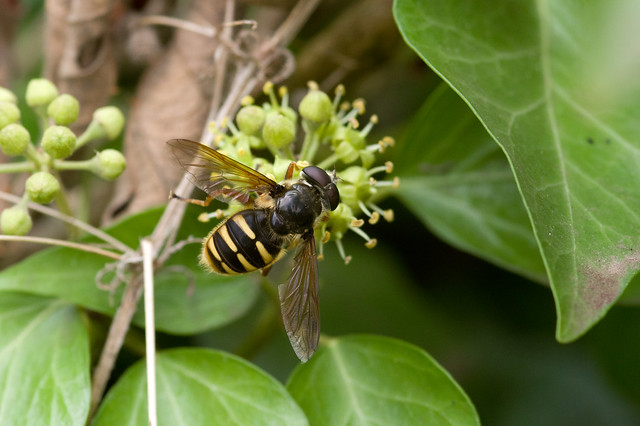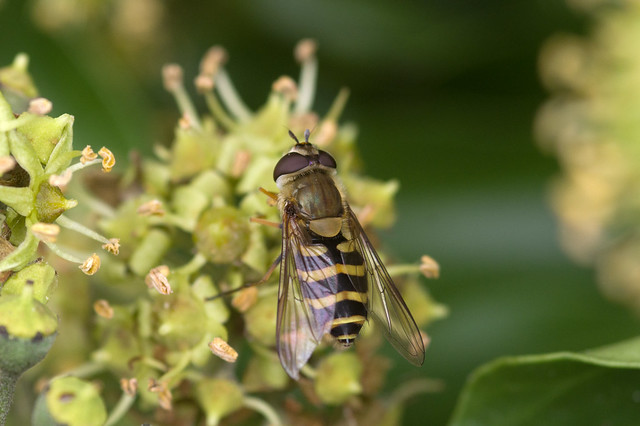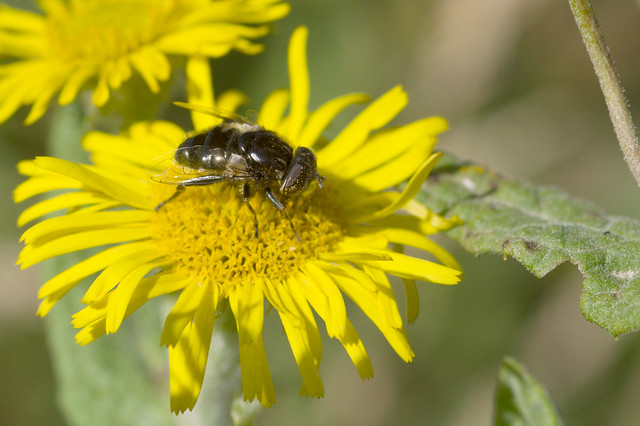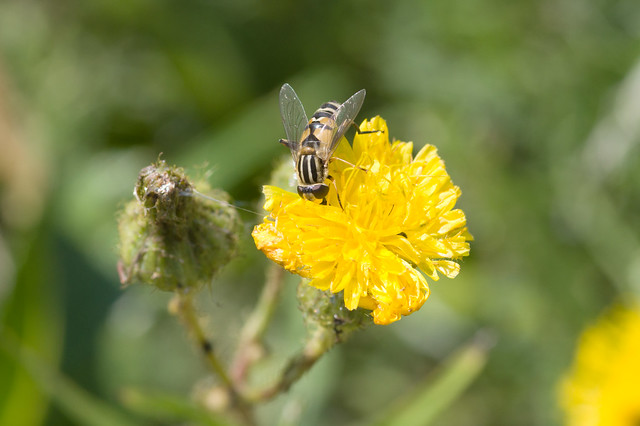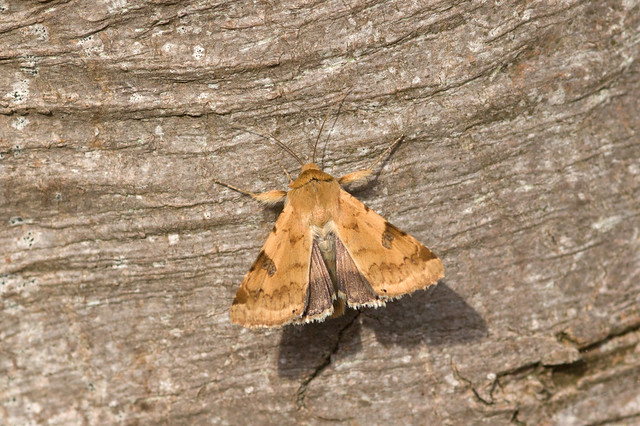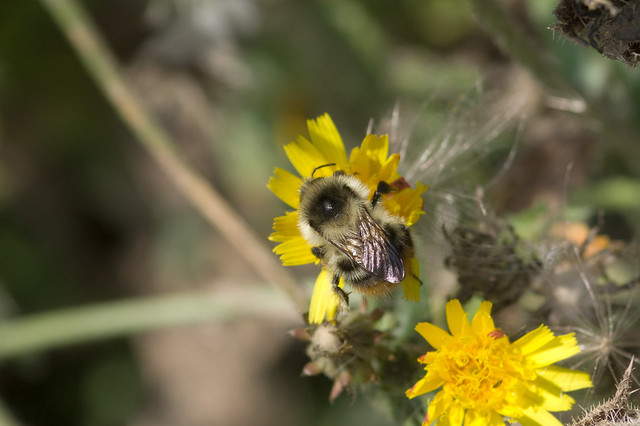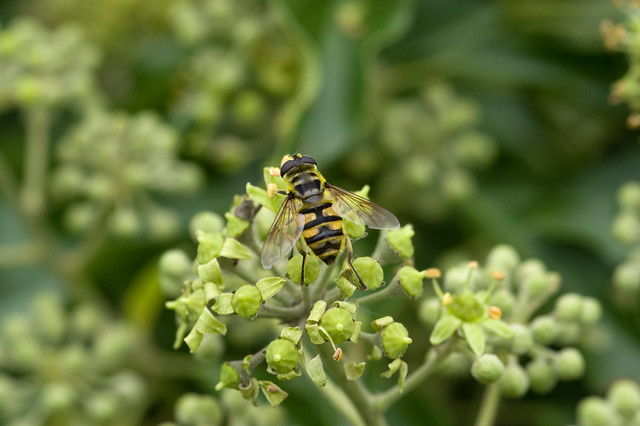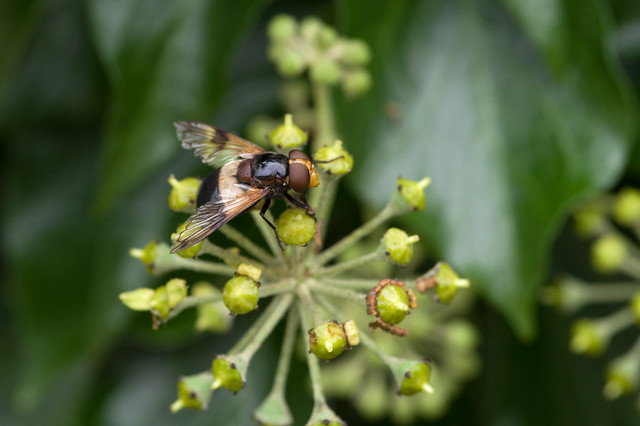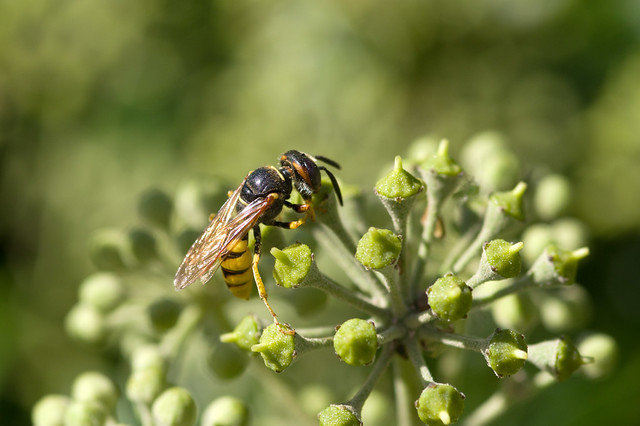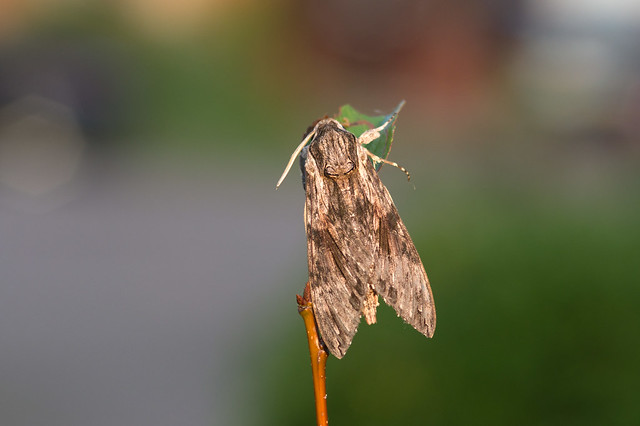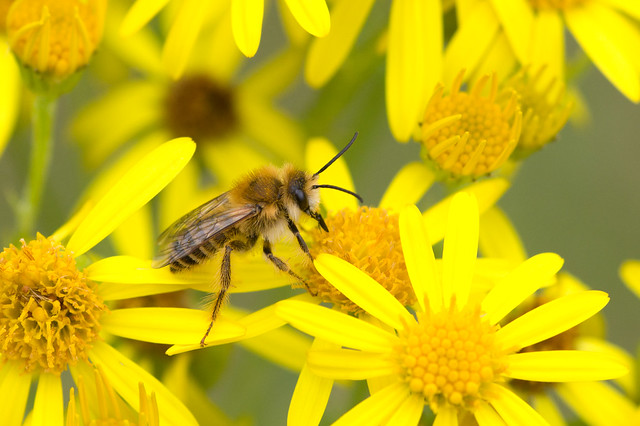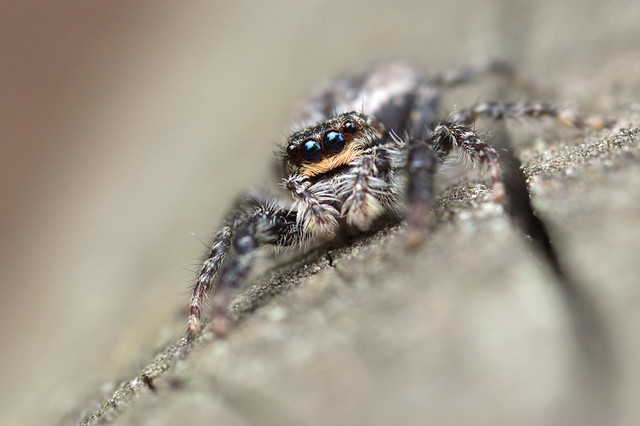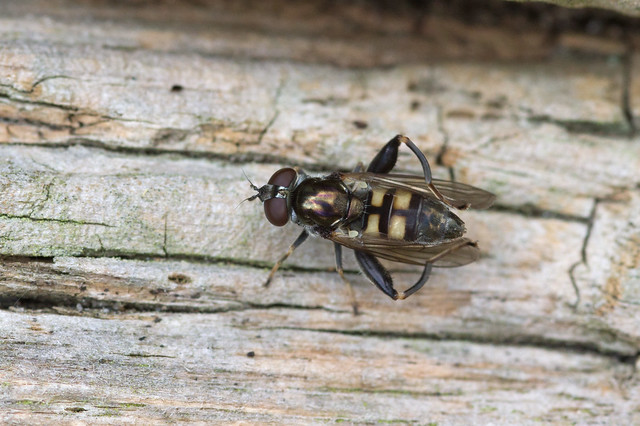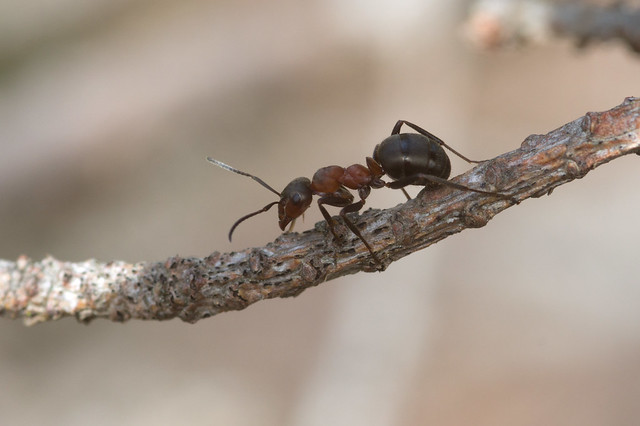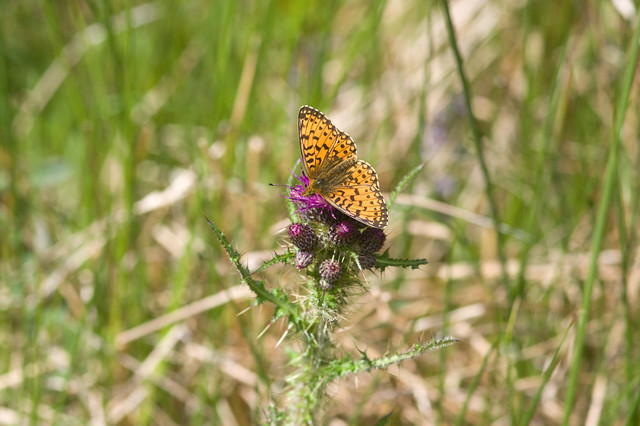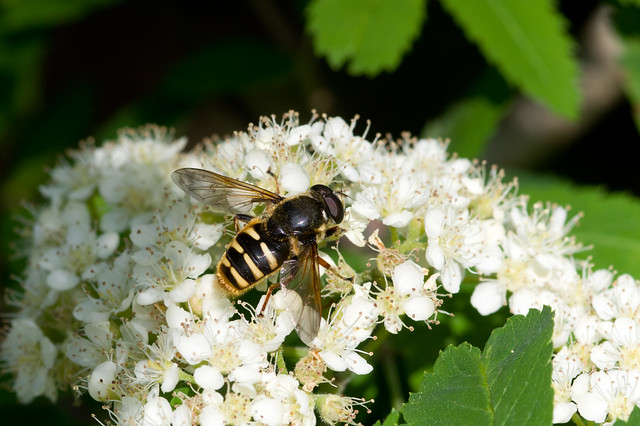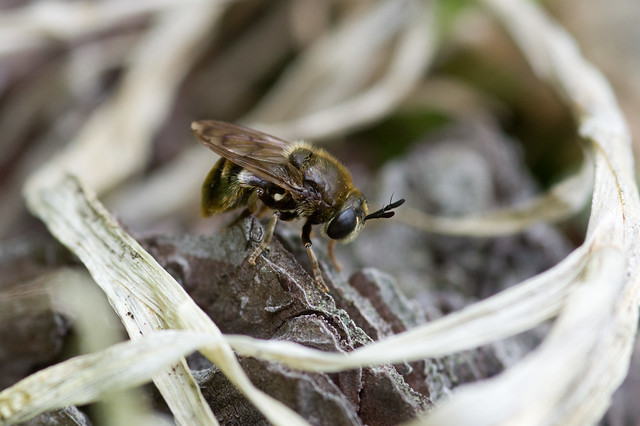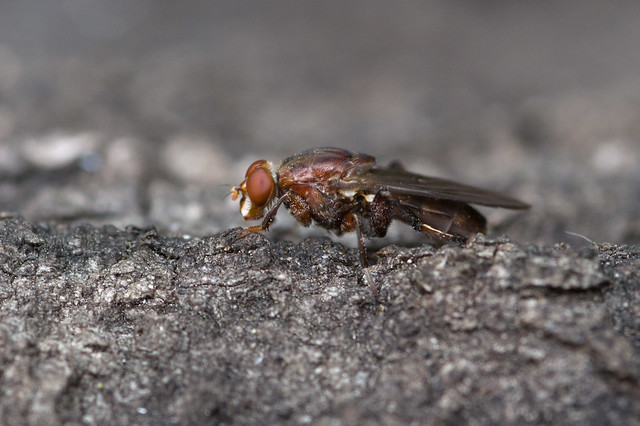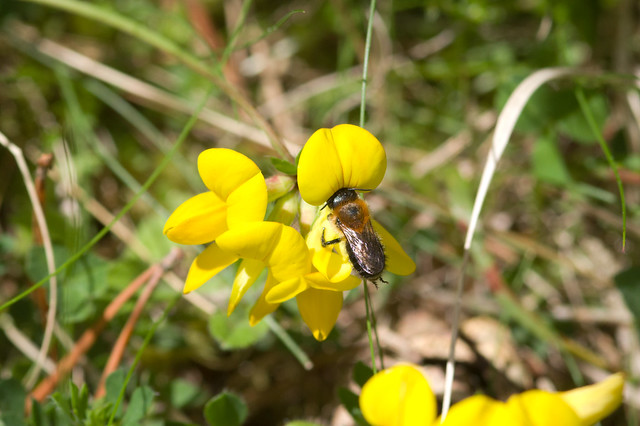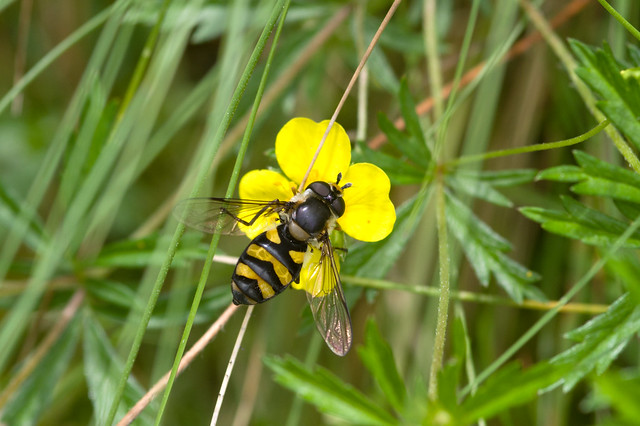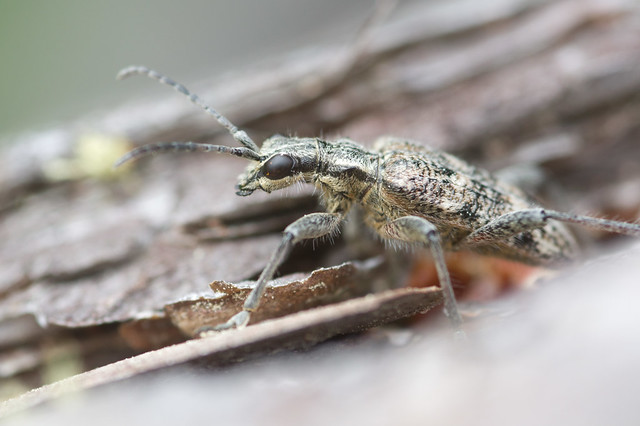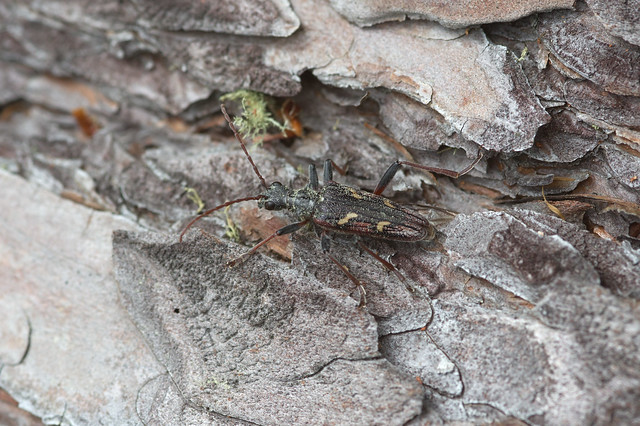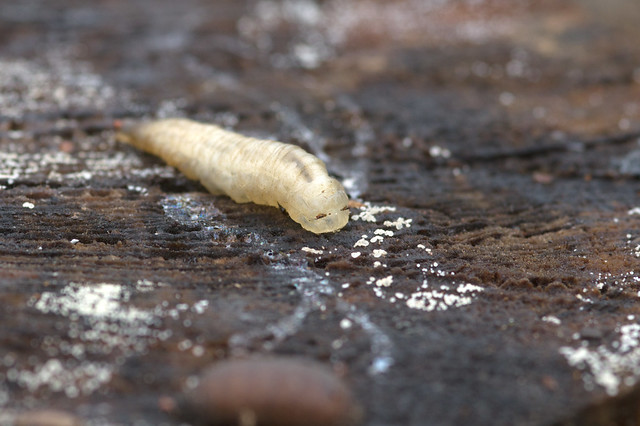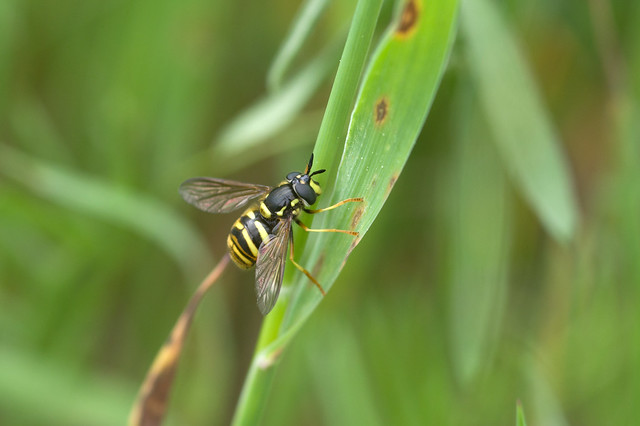After travelling all over the UK for the last month, it's been nice to get back and about on the local patch. At The Lodge, some familiar summer wildlife is out and about, with lots of Meadow Browns fluttering though the grass, the striking longhorn beetle
Rutpela maculata on the brambles, and the lovely wool-carder bees on the lamb's ear in the gardens.
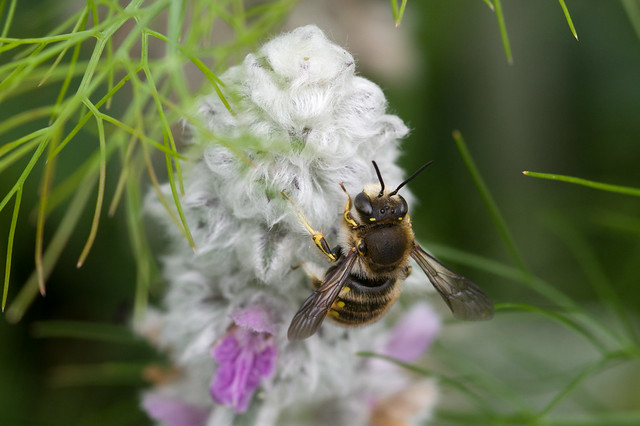 |
| Male Anthidium manicatum on lamb's ear |
A near annual summer event at The Lodge, is the pursuit of the mysterious black bee. I first saw one of these in 2012, at which point it was assumed to be
Andrena pilipes, a scarce and predominantly coastal species. It's since been mooted that it might actually be the much rarer
Andrena nigrospina, but the two species are very difficult to distinguish. The fact that we've only ever seen the black beast in July, and never earlier in the year, might suggest that it's
nigrospina, but we probably need some better evidence than that before we come to a firm conclusion. One thing that might help would be to find where they're nesting, as the form of
Nomada fulvicornis which parasitises each species is apparently more distinctive than its hosts.
The first sighting of the year came last Monday, with a female heavily laden with pollen on a lovely flowering tree which I've somehow never noticed before. We'd actually been looking for clearwing moths using pheromone lures, but I'd got a bit distracted, first of all finding my second ever
Melangyna cincta on some brambles, and then finally noticing the tree and the bees buzzing round it.
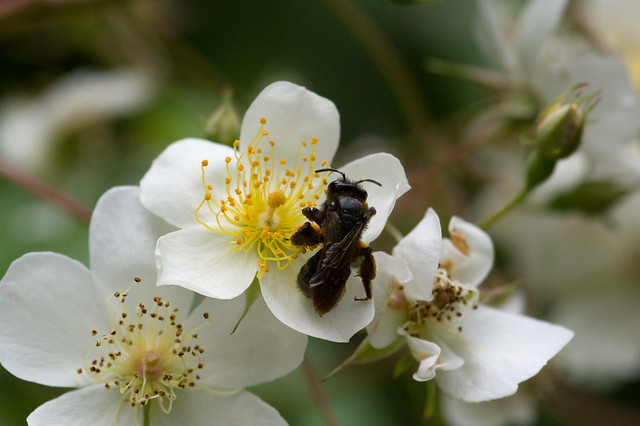 |
| The mysterious black bee |
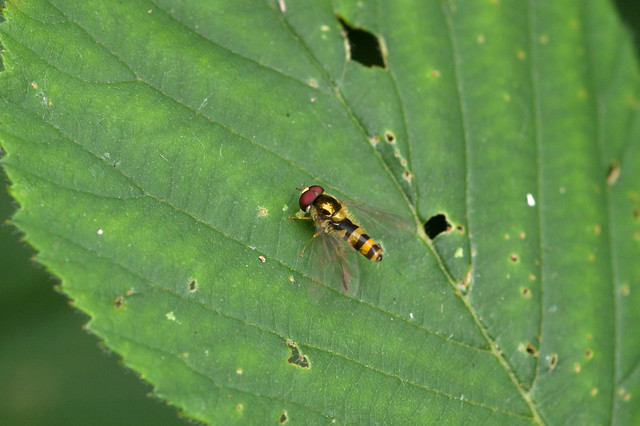 |
| Melangyna cincta |
The following day we went round the old heath, where we didn't find any black bees, but we did find a rather nice black beetle. Last year the first
Stictoleptura scutellata for the reserve, and possibly for Bedfordshire was found, and now one flew in from nowhere, and crashed into Col's neck before dropping to the sand and allowing itself to be photographed. With a supporting cast of the wasp mimicking hoverfly
Chrysotoxum verralli, the dazzlingly green wasp
Trichrysis cyanea and an obliging
Cerceris rybyensis feeding on a forget-me-not, it was a productive lunchtime!
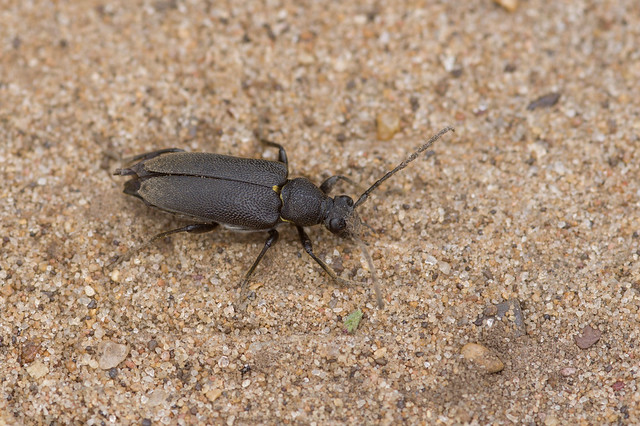 |
| Stictoleptura scutellata |
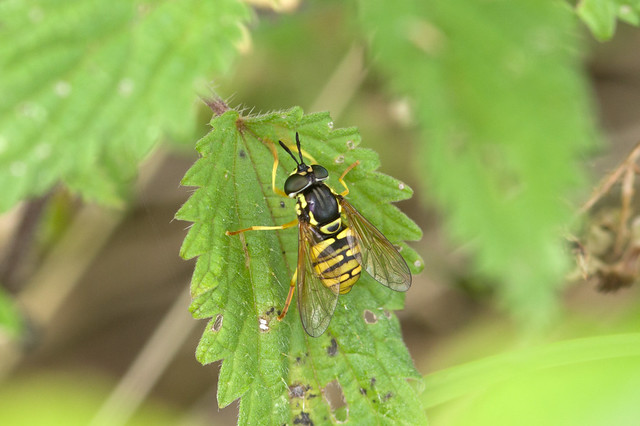 |
| Chrysotoxum verralli |
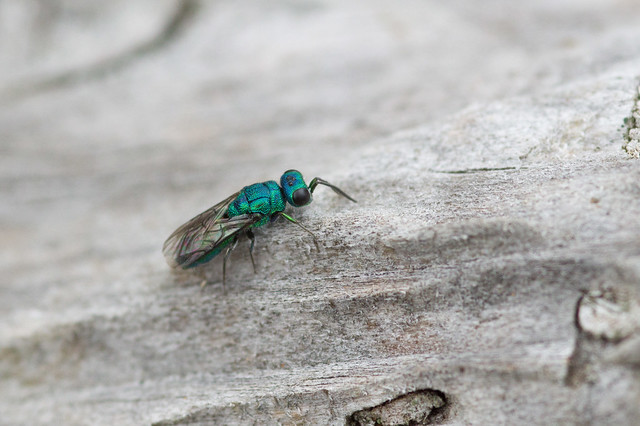 |
| Trichrysis cyanea |
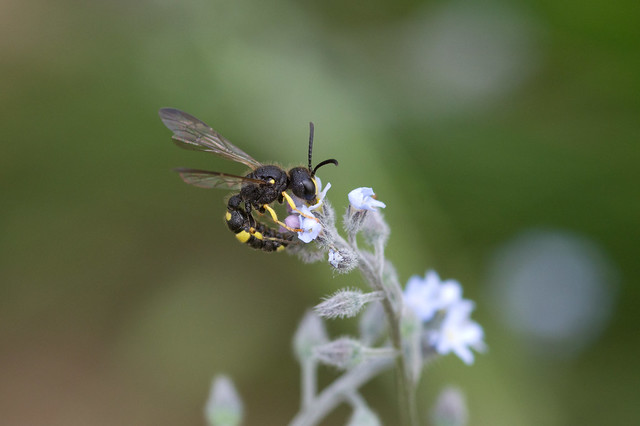 |
| Cerceris rybyensis |
Later in the week we ventured onto the newer area of heath, and some promising areas of bare ground by the path quickly turned up the goods, with at least one heavily laden female bee looking like it was returning to a burrow - unfortunately it didn't find one, so we're still not completely sure where the nest site is. One thing that is definitely nesting in the bare sand is the wasp Tachysphex pompiliformis, which flew in carrying an impressively large grasshopper with which it will stock a burrow for its larvae.
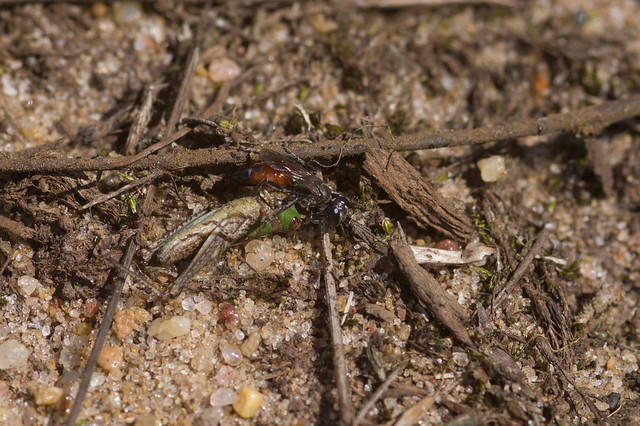 |
| Tachysphex pompiliformis |
That's almost all the wildlife for now, but at the weekend I dug out my clearwing lures, with a clear target in mind, given the poplar plantation that's just over the fence from my garden. I've looked for hornet clearwings at the base of poplars in the past, without any luck, so I was keen to see whether the lures could bring the moths to me. Within a few minutes I had my answer, a glorious male zipped up to the lure and gave it a thorough investigation before I netted it for a photo session a bit later in the day. I'm definitely a fan of being able to conjure such a fantastic beast out of thin air, I think the lures may be getting a few more outings over the next few weeks!
 |
| Hornet Clearwing |
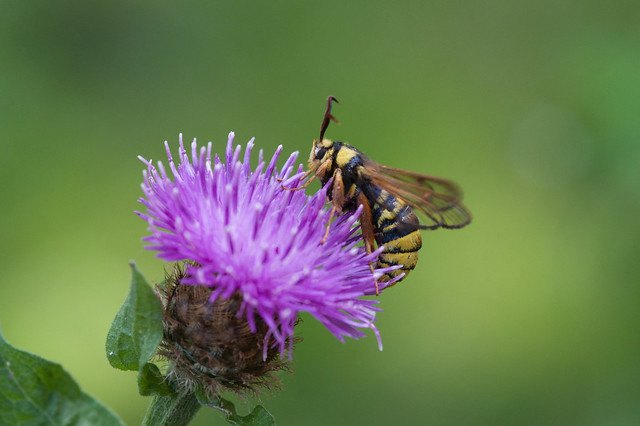 |
| Hornet Clearwing, so good it deserves two photos |

